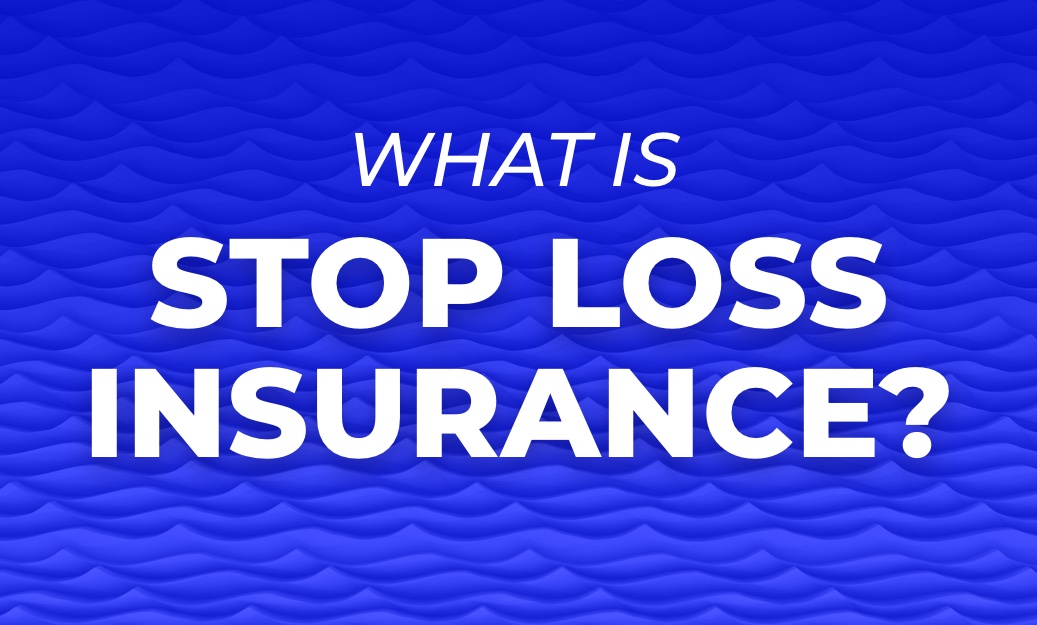What Is Stop Loss Insurance?
Definitions, Benefits, Costs, Key Contract Considerations
By Kev Coleman - Health Insurance Industry Expert & Author
Updated on September 18, 2020

Despite its widespread use among employer health plans, stop loss insurance is often unknown or misunderstood by businesses and associations. In this article, you’ll learn:
- Simple Definition of Stop Loss Insurance Coverage
- Key Terms
- The Benefit of Stop Loss Insurance
- Key Contract Considerations
- Costs
- How to Shop for Stop Loss Coverage
Simple Definition of Stop Loss Insurance Coverage
Put simply, a stop loss policy is a type of insurance coverage where the policy only pays after medical claims exceed a pre-determined amount. Stop loss coverage is used for a self-insured health plan (a self-insured plan is responsible to pay its own medical claims, as opposed to paying a premium to a third-party insurance company that will pay the claims for them). However, when a self-insured plan buys stop loss protection, it has set a limit on the maximum amount of medical claims it will pay for an individual, or for the entire health plan, during a plan year. For example, imagine the Acme Association has stop loss insurance. This stop loss policy’s attachment point (i.e. the predetermined amount above which the policy will pay claims) is $100,000 for all the claims in the health plan. During the policy’s contract period, Acme Association has $350,000 in medical claims. The stop loss policy would pay $250,000 ($350,000 total claims minus the $100,000 attachment point). Because medical claims can be unexpectantly high due to specialty medications or complicated care for a serious illness like cancer, it’s important to choose a policy with adequate financial protection.
Stop loss coverage should be purchased to align with the qualifying medical expenses defined by the health plan’s benefit design (unless otherwise negotiated between the health plan and the stop loss insurer). Additionally, a stop loss policy is limited to a certain time period in which a claim may occur and normally has limitations regarding how long after the contract period it will reimburse a qualifying medical bill. Stop loss reimbursements are also paid to the employer or association running the health plan, not to the people who participate in the health plan.
Key Terms
Stop loss insurance has a special vocabulary associated with the product and it’s very important to understand the key terms in order to compare plans fairly and ensure you obtain the coverage that’s right for your health plan’s circumstances. Be certain to read all the definitions below in the order they are written since some of the later definitions rely on the definitions of earlier terms. The terms are ordered in terms of importance, not alphabetic order.
-
Attachment Point - An attachment point is the dollar amount of medical claims after which the stop loss coverage begins reimbursement. In some ways, it is similar to a deductible. For example, if a stop loss policy has an attachment point of $50,000 then qualifying medical claims starting at $50,001 and higher would be reimbursed by the policy. The first $50,000 would be the health plan’s responsibility without help from the stop loss policy. The attachment point for expenses across all the health plan participants is normally set based on the expected medical claims for a health plan. For example, if the plan expects $1,000,000 in medical claims given the nature of its health plan participants and their health trends, the stop loss policy might be negotiated to pay in the event of $1,200,000 in medical claims (20% higher than what is predicted). In general, the higher the attachment point, the lower the stop loss premium
-
Individual Stop Loss - Individual stop loss coverage covers the medical claim expenses of a single individual within the health plan that exceed a predetermined attachment point. Individual stop loss coverage is often combined with “aggregate” stop loss coverage (see the explanation of aggregate stop loss below). Individual stop loss coverage is very helpful when a single health plan member has an unexpected medical event requiring extremely costly care. Claims reimbursements by an individual stop loss policy normally occur after the attachment point is reached by an individual (as opposed to waiting until the end of a plan year)
-
Aggregate Stop Loss - Aggregate stop loss coverage covers the medical claim expenses of all the health plan participants in a scenario where the cumulative claims exceed a predetermined attachment point during the policy’s contract period (e.g. 125% of expected medical claim expenses for the year). As mentioned earlier, such a limitation should encourage you to choose a policy with adequate financial protection given the number of people in your health plan and potential claims you may face. Claims reimbursements by an aggregate stop loss policy often occur at the end of the health plan year/contract period
-
Lasering - Lasering is an insurer practice where an individual with high risk for medical claims is excluded from stop loss coverage, or is given a higher attachment point than other participants within the health plan. Lasering is often negotiated during a stop loss policy renewal, though it could happen after the disclosure phase within the initial negotiations for coverage
-
Run Out - “Run out” refers to a period of time immediately following the end of the contract period (or term) of the stop loss policy where claims from the contract period will still be paid by the insurer. A run out period is important because medical claims are sometimes billed slowly. For example, medical services received at the end of a calendar year might be billed after the beginning of the following year when the old policy has expired
-
Run In – A “run in” clause will make a stop loss policy liable to pay qualified medical expenses that happen before the stop loss policy coverage period. This clause might be used when a new stop loss policy is purchased and there is a concern about the possibility of new bills for medical care that was delivered during a time period before the stop loss coverage became effective. Some policies may place limits on the maximum amount of money that will be paid for run in claims
-
Terminal Liability - A terminal liability clause within a stop loss policy may be negotiated to address claims that need to be paid within a certain period (e.g. three months) after the conclusion of the stop loss policy
-
Carrier - A carrier is another name for an insurance company. A broker comparing stop loss premiums may request quotes from multiple carriers
-
Actuary - An actuary is a professional trained in quantifying the financial risk the insurance company has with respect to insurance policy claims. In the context of stop loss insurance, the actuary models a health plan’s likelihood of stop loss claims and this analysis forms the foundation of the premium charged for the stop loss insurance
-
Excess Insurance - Excess insurance is another name for stop loss insurance. This name is used because stop loss insurance covers medical claim expenses in excess (i.e. over) a predetermined amount (otherwise known as the attachment point)
-
Specific Stop Loss - Specific stop loss is another name for “individual stop loss.” Individual stop loss coverage is defined earlier in this section
-
Spaggregate Coverage - A euphemism for a stop loss policy that combines specific (i.e. individual) and aggregate stop loss coverages. See the definitions of individual and aggregate coverage above
The Benefit of Stop Loss Insurance
The primary benefit of stop loss insurance is the protection it provides a self-insured health plan against catastrophic medical claims that could bankrupt the health plan. This protection represents an important pillar of a self-insured plan’s financial soundness since self-funding makes the plan sponsor (e.g. an association or employer) liable for the payment of medical claims. Stop loss coverage is a tool to protect a self-funded plan from claim expenses that are beyond their capacity to pay.
Typical Contract Considerations
The contract period is the time span during which the stop loss policy will be liable for claims by the health plan being insured. Claims incurred outside the contract period are not reimbursable by the stop loss policy under normal contract conditions. However, it is important to note that even for qualifying medical service delivered to a health plan participant during the contract period, the billing might happen after the contract period expires.
Coverage periods for stop loss policies vary by insurer. Some plans even have coverage options for a period after the plan discontinues or even before it starts. Below are some of the most common coverage options.
- 12/12 – Qualified medical expenses above the attachment point are reimbursed when they occur, and are billed, during the twelve-month coverage period by the stop loss policy
- 12/15 - Qualified medical expenses above the attachment point are reimbursed when they occur during the twelve-month coverage period and are billed during the coverage period or up to three months after the expiration of the coverage period. This is an example of a “run out” policy
- 12/18 - Qualified medical expenses above the attachment point are reimbursed when they occur during the twelve-month coverage period and are billed during the coverage period or up to six months after the expiration of the coverage period
- 15/12 - Qualified medical expenses above the attachment point are reimbursed when they occur up to three months before the coverage period begins and through the end of the coverage period and are billed during the coverage period. This is an example of a “run in” policy
Stop Loss Premium Costs
Stop loss premiums vary by numerous factors from insurer to policy characteristics (e.g. attachment point, coverage limits, lasering, the number of participants covered, etc.). A 2015 study by Aegis Risk Medical Stop Loss Premium Survey found that the average individual stop loss premium for coverage with a $100,000 attachment point on a 12/12 plan (see section above) was $75.63 a month. The average premium was reduced to $21.91 for a $300,000 attachment point and $12.32 for a $500,000 attachment point.
The same study found that the supplement of aggregate stop loss coverage to individual stop loss (with an attachment point of $200,000 or less for the individual) averaged an additional $7.13 to the monthly premium and gave aggregate stop loss coverage that began reimbursement after claims reached 125% of actuarially expected annual expenses.
How to Shop for Stop Loss Insurance
The foundation of meaningful stop loss coverage is making certain the qualified medical services in the health plan’s summary of benefits is identical to the qualified medical services that are reimbursable within the stop loss plan. If those benefits are misaligned, your health plan could incur an expense that is legitimate under your health plan but ineligible for stop loss coverage.
Another extremely important matter to consider when shopping for stop loss insurance is whether your health plan can employ any tactics that will decrease the plan’s probability of excessive medical claims. For example, a health plan may utilize Reference Based Pricing with its healthcare provider network so that medical charges are constrained by Medicare reimbursement rates. Another tactic is the use of a fiduciary-style pharmacy benefits manager to prevent unnecessary prescription drug expenses such as the coverage of high cost/low clinical value medications. Solid cost containment tactics such as the ones discussed can lower your risk of excessive medical claims and, thus, the cost of stop loss coverage.
Comparing contract conditions is also very important when shopping for stop loss plans. You should not only review qualified medical expenses but also key contract conditions such as:
- Specific and aggregate coverage conditions (e.g. medical services covered and any monetary limits)
- Attachment points
- Run in/run out provisions (see Typical Contract Conditions section above)
- Lasering provisions (see Key Terms section)
- Reimbursement practices (e.g. timing of reimbursements)
A comment should be made with regard to the last bullet point, reimbursement practices. One of the considerations a health plan has with respect to reimbursement practices is cash flow. For example, could your health plan accept contract conditions where a catastrophic claim is first paid by the health plan and then reimbursed 90 days later by the stop loss insurer? If the answer is “no,” you should consider a stop loss plan that pays when a qualifying claim is incurred. This option, however, can increase the price of the stop loss insurance.
A stop loss insurer normally requires the health plan sponsor (e.g. an association or an employer) to disclose employees or expected plan participants who are at risk for high medical claims. After all the relevant information is reviewed by the insurer’s actuaries and underwriters, a final quote will be offered to the health plan. The final quote should be a “firm” quote. If you receive a “contingent” quote, it means the insurer will adjust the premium quote in the future based on additional information it intends to collect or analyze.





